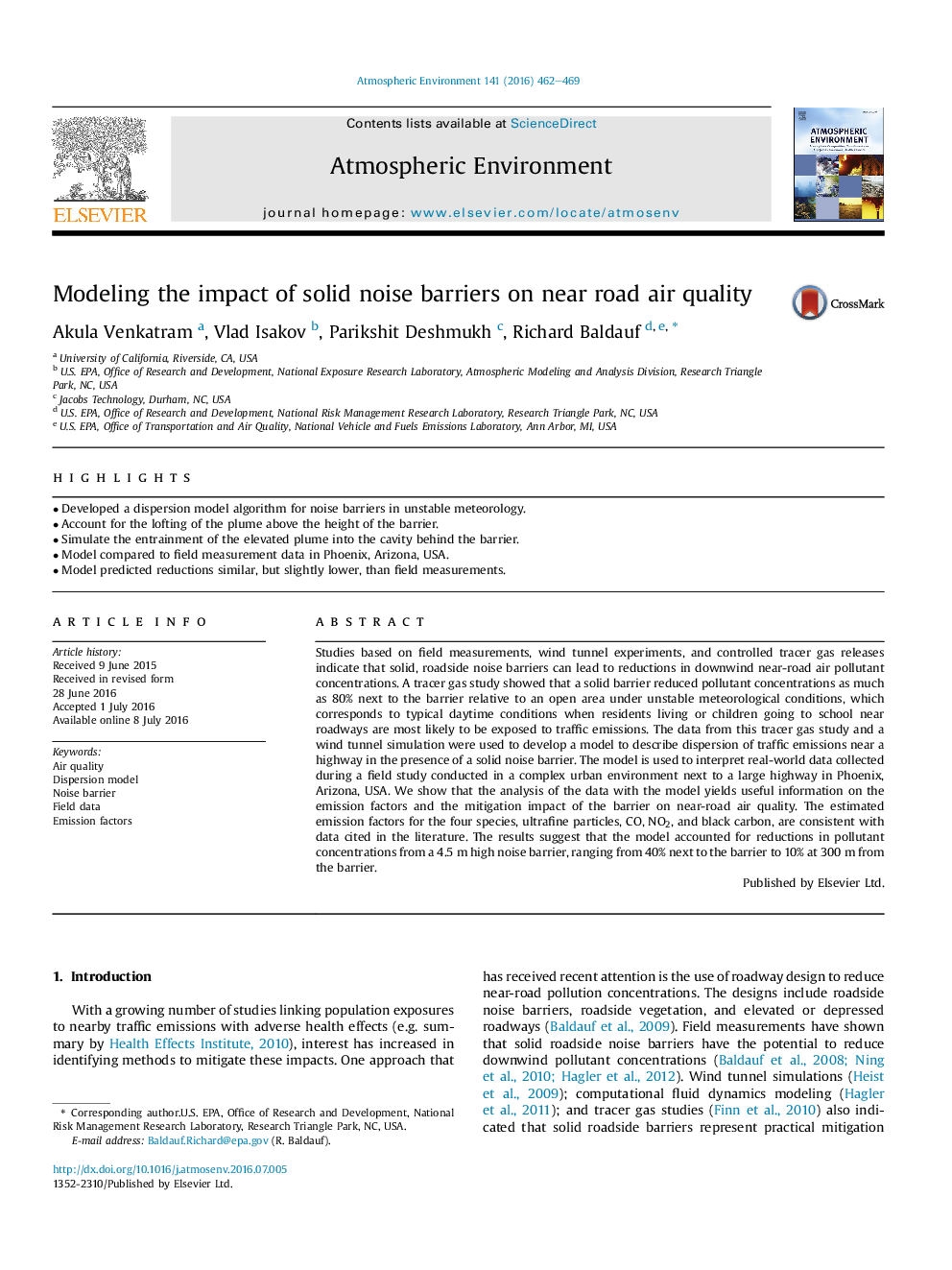| کد مقاله | کد نشریه | سال انتشار | مقاله انگلیسی | نسخه تمام متن |
|---|---|---|---|---|
| 6336090 | 1620333 | 2016 | 8 صفحه PDF | دانلود رایگان |
- Developed a dispersion model algorithm for noise barriers in unstable meteorology.
- Account for the lofting of the plume above the height of the barrier.
- Simulate the entrainment of the elevated plume into the cavity behind the barrier.
- Model compared to field measurement data in Phoenix, Arizona, USA.
- Model predicted reductions similar, but slightly lower, than field measurements.
Studies based on field measurements, wind tunnel experiments, and controlled tracer gas releases indicate that solid, roadside noise barriers can lead to reductions in downwind near-road air pollutant concentrations. A tracer gas study showed that a solid barrier reduced pollutant concentrations as much as 80% next to the barrier relative to an open area under unstable meteorological conditions, which corresponds to typical daytime conditions when residents living or children going to school near roadways are most likely to be exposed to traffic emissions. The data from this tracer gas study and a wind tunnel simulation were used to develop a model to describe dispersion of traffic emissions near a highway in the presence of a solid noise barrier. The model is used to interpret real-world data collected during a field study conducted in a complex urban environment next to a large highway in Phoenix, Arizona, USA. We show that the analysis of the data with the model yields useful information on the emission factors and the mitigation impact of the barrier on near-road air quality. The estimated emission factors for the four species, ultrafine particles, CO, NO2, and black carbon, are consistent with data cited in the literature. The results suggest that the model accounted for reductions in pollutant concentrations from a 4.5Â m high noise barrier, ranging from 40% next to the barrier to 10% at 300Â m from the barrier.
Journal: Atmospheric Environment - Volume 141, September 2016, Pages 462-469
